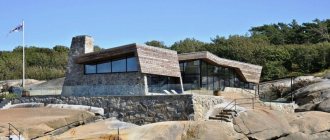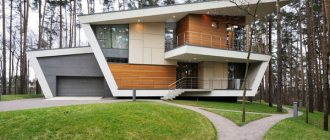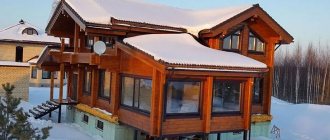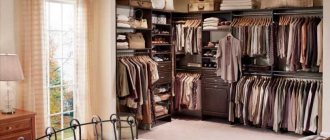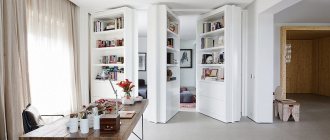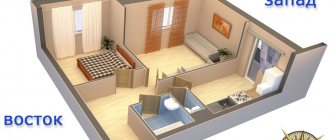When growing crops, in addition to proper agricultural technology, it is also necessary to create the most favorable conditions for the growth and development of plants.
The only solution here is to equip a greenhouse; it is there that it is possible to maintain an optimal microclimate at all stages of the growing season.
There are different options, but the most affordable and environmentally friendly is a wooden greenhouse, which, if properly processed, can last for decades. It can be covered not only with plastic film, but also with polycarbonate and glass.
Main advantages
Regardless of whether inexpensive polycarbonate greenhouses or more expensive structures are being considered, the gardener receives a unique material that is much better than wood or metal in this matter.
The material is very light, yet transparent, which allows sunlight to easily pass through while retaining heat inside the structure.
In addition, it is plastic, which makes it possible to bend it without harm to the future greenhouse; it is very convenient to work with; individual parts can be fastened in a large number of ways:
- Gluing
- Welding
- Screw fastening
Each mount is convenient in its own way for the site in a particular case. The final structure can very easily be equipped with partitions and vents, if necessary.
Foundation
To build a stationary greenhouse using heavy window frames, it is necessary to prepare a shallow strip foundation or a foundation made of piles made of brick or concrete on a sand bed. Their height is 40–60 cm.
It should rise at least 30 cm above the ground surface. The lower load-bearing bars are mounted on metal corners concreted into the base of the foundation. Thanks to this technology, the greenhouse will always be warm, which is so necessary for early planting work. For greater reliability, the greenhouse is equipped with stove heating with a chimney, which runs under the shelves and racks.
In the case of making a lightweight version of a greenhouse covered with film, timber lining will be sufficient.
Such a mobile structure, if necessary, can be disassembled or moved to another location. But there is one nuance here: if you put the timber on the ground, it will soon rot. The optimal distance between it and the ground surface should be 4–5 cm. To secure the bars, you must first drive metal corners 800–900 mm long into the ground. To avoid corrosive changes, the corners are primed. To protect the tree from the harmful effects of moisture, you need to lay a layer of roofing felt under it.
The timber frame is attached to the metal corners using anchor bolts. The gaps between the bars and the soil are filled with earth and compacted. If you use bricks instead of corners, the foundation for the greenhouse will be less strong and reliable.
How to choose material
The photo of polycarbonate greenhouses shows that externally the structures differ not only in shape, but also in the color of the material used. When choosing, you need to pay attention first of all to the color of the polycarbonate; the lighter it is, the better the light transmittance.
However, you need to take into account the characteristics of the plants that you plan to grow; some of them do not tolerate prolonged exposure to direct sunlight. In this case, you need to purchase a slightly darkened variety of material.
In addition to color, you need to pay attention to the thickness of the sheets; the thicker it is, the better. The best polycarbonate greenhouses are made in 2 layers, thus it is possible to significantly insulate the beds located inside.
Such structures are used mainly in regions with harsh winters, but they are recommended to be built in any case if you plan to grow crops all year round.
To prevent the appearance of condensation on the internal walls of the greenhouse, it is recommended to choose a material that is based on a special layer that prevents the accumulation of moisture on the walls.
Underground or buried structure
It is known that in winter the ground freezes slowly. At an air temperature of ±1°C, the soil temperature at a depth of 1 meter is about 10°C. When setting up a greenhouse, one cannot help but take advantage of this natural bonus. For construction, you must first dig a hole, 1 to 1.5 m deep, and install a transparent coating on top.
One of the options for a recessed greenhouse is an improved design - a thermos greenhouse, which provides even greater indoor temperature and illumination even in cloudy weather. For a thermos greenhouse, you need to build a reinforced concrete foundation. The coating is often double-layered. Inside, the walls are covered with reflective paint or other material that acts as a solar energy collector.
The disadvantage of this variety is that it is difficult to organize proper drainage in the underground part.
A large in-ground greenhouse takes quite a long time to build due to the need to dig a pit. In addition, you will have to take care of steps at the entrance, waterproofing and protection from pests, which implies additional costs.
Strengths
Compared to other materials from which greenhouses are made, polycarbonate stands out significantly, having a large number of strengths.
First of all, it is necessary to note the high transmittance of sunlight and the possibility of regulating it by using material of different colors.
Compared to other materials, polycarbonate is highly resistant to mechanical damage, which makes it literally a leader in this matter. It is also not affected by weather conditions. This design can stand in one place for more than 20 years without significant breakdowns or shortcomings.
Due to the flexibility of the material, the greenhouse can be given absolutely any shape, which increases the degree of harmony of this building with other buildings on the site. They also have an aesthetic appearance.
Greenhouse construction
Making greenhouses with your own hands from scrap materials is not difficult, but you need to apply all your skill and spend time. Let's consider the construction of one of the types of greenhouses, which will require a little material and effort.
But for beginning greenhouse growers, this will be a great option to try their hand at construction and grow crops.
Flaws
In addition to the strengths, there are also weaknesses. First of all, this is the flammability of the material. When exposed to an open source of fire or hot objects, it begins to melt, losing its previous shape.
Polycarbonate is also relatively expensive compared to other materials. However, there is a wide range of this material on sale in different price categories, which allows each summer resident to choose the most suitable option for himself.
Ready-made greenhouses
Many gardeners prefer to purchase ready-made structures so as not to assemble them themselves. This saves a lot of time, however, this method of constructing a greenhouse on the site has several disadvantages.
As a rule, there are mostly completely transparent structures on sale; they are not suitable for all cultivated plants, since in some cases shading is necessary in certain areas. In addition, the frame of a finished structure is often susceptible to corrosion, as it is made of low-quality metal.
However, this is a budget option for building a greenhouse that can last at least 5-7 years. Additionally, it will be necessary to ensure the stability of the structure on the site and install a foundation to give it solidity in case of strong gusts of wind.
If desired, you can make an individual order for a reinforced greenhouse. The manufacturer will make all the parts with precision, and then send it to the customer. Or he can assemble the building himself and send it ready-made.
The advantages of a reinforced greenhouse are its resistance to low temperatures and sharp gusts of wind; the frame uses stainless metal, which significantly increases its service life.
The base is made of 2 layers of polycarbonate with a special coating that prevents condensation from appearing on the walls, which also has a positive effect on the level of humidity inside.
Types of structures
The most popular type of greenhouses are gable structures. But, in addition to them, with the help of wooden elements, if desired, you can build other types of greenhouses.
from left to right, top to bottom: arched, domed, lean-to, pyramidal greenhouses
Arched
An arched greenhouse, as we said above, is almost impossible to make entirely of wood in domestic conditions. For its installation, additional elements will be required in the form of metal or durable plastic arcs. Only a frame can be made of wood, which is created for ease of installation and reliable fixation of the structure. As a rule, low greenhouses are built using the arched method; they have excellent light transmission and do not require large time and material costs. But high greenhouses can also have an arched roof, this allows them to grow freedom-loving crops. The downside of such a structure is that it is practically unsuitable for growing seedlings, since it does not have enough maneuvers to carry out hardening of plantings. Another disadvantage of the arched structure is the need for additional cleaning of the roof from snow, which cannot roll off the arched roof on its own.
Domed
In central Russia, such a greenhouse will become an unmotivated luxury, since it involves a rather complex and costly installation process from triangular cladding elements. But in seismically unfavorable parts of our country, it is precisely this design that will become the safest and most resistant to earth vibrations. In addition, the domed greenhouse looks very stylish and fits organically into the exterior of any site. This design requires additional insulation and sealing due to the large number of joints.
Single-pitch
Lean-to greenhouses look like half a house. They are usually built for planting seedlings on the south side of the site. Mono-pitch structures are convenient because they can be attached to any existing structures on the site, be it a barn, garage or gazebo. The main condition is good lighting of the place. It is recommended to cover the roof slope with glass or plastic, which have good light transmittance.
Pyramid
Since ancient times, the pyramid has been considered a mythical place of power. Many gardeners are confident that in such a greenhouse plants will grow and bear fruit better and more intensively. A square of the correct shape is used as a frame for its construction. Wooden beams extend upward from the base of each corner, intersecting at a single point at the top of the structure. The entrance to such a greenhouse, oddly enough, is best done from the north side. A greenhouse requires special precision in construction - for small garden plots, the optimal size is considered to be a diagonal of 2 m, a height of 3.2 m, and square sides of 1.42 m. These calculations are given in accordance with the rule of the “golden ratio”, a pyramidal greenhouse is built according to principle - the height of the structure should be exactly 1.57 times less than the side of the square of the base frame.
How to determine size
The dimensions of a polycarbonate greenhouse are primarily dictated by the size of the free space on the site. However, if this space is not enough, it is possible to build a 2-story structure, which allows you to accommodate many more varieties of plants.
This design will be a little more expensive, since it will include additional elements of a frame and a ladder; in general, the consumption of materials will be almost 2 times more. The most common option is a 3x6 greenhouse.
What wood is best to use
Coniferous wood can be used to build greenhouse complexes and greenhouses; it is inexpensive and easy to process. Species such as larch and oak may be better suited for constructing a frame, but the cost of wood is so high that it is cheaper to assemble a structure from an aluminum profile.
Often, to build a greenhouse or greenhouse complex, they use wood available on a summer cottage, for example, old fruit trees, walnuts, acacia, and anything that can be used for hemming the lower tier and tying are planted onto timber and slats.
